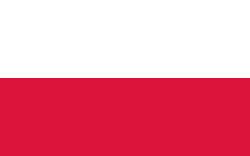CRM (Customer Relationship Management) is both a strategy and a technology designed to build, maintain, and optimize customer relationships at every stage of their journey with your brand. In practice, it refers to a digital platform that gathers all customer information in one place—from the first contact and purchase history to preferences and feedback.
Why Is CRM Changing the Way We Do Business?
Imagine remembering everything about every client—when they last made a purchase, what you discussed, what they need, and what issues they’re facing. CRM is your company’s digital memory—it never forgets and always suggests the best way to serve your customers.
Key Capabilities of CRM Systems
- Centralized customer database with full history of contacts, preferences, and transactions
- Automated follow-ups: the system reminds you to contact potential customers
- Sales trend analysis: forecasting monthly results based on historical data
- Personalized communication: tailoring offers to individual customer needs
- Sales team management: tracking performance and motivating with gamification
Transformation Across Industries
- B2B sector: Tech companies use CRM to manage long sales cycles involving multiple decision-makers
- Retail & e-commerce: Online stores integrate CRM with Google Analytics and Facebook to build accurate buyer profiles and automate remarketing
- Professional services: Law firms, clinics, and design studios use CRM to schedule appointments, send reminders, and build long-term loyalty
- Real estate: Agents track client preferences, automate new listing notifications, and manage deals from first contact to closing
Technological Revolution in CRM
Modern CRM platforms are more than just databases—they’re intelligent ecosystems powered by AI and machine learning.
Salesforce offers advanced personalization and analytics, while HubSpot is known for its ease of use and built-in marketing automation.
The cloud-first trend means most businesses choose SaaS solutions that work in a browser and sync in real time across devices—enabling remote work and access to client data from anywhere in the world.
CRM Implementation Strategy
1. Discovery phase:
Mapping the customer journey, identifying key touchpoints, analyzing existing processes, and setting measurable business goals.
2. System architecture:
Designing data structures, integrations with existing tools (e.g., website, email marketing, payment systems), and automation flows.
3. Implementation and testing:
System configuration, importing historical data, building dashboards and reports, and testing usage scenarios with team members.
4. Adoption and optimization:
Training the team, monitoring KPIs, and continuously improving based on user feedback.
The Future of CRM
The next decade will bring AI-driven CRM platforms that predict customer behavior, auto-personalize communication, and optimize pricing in real time. Integration with IoT will enable tracking of product usage, while augmented reality will change how offers are presented.
FAQ
Yes—even sole proprietorships can benefit from CRM.
Free versions like HubSpot CRM or Zoho CRM or Odoo CRM app allow for professional contact management with no monthly cost. It’s an investment in the future, especially as the company grows.
Website may use cookies to personalize and facilitate maximum navigation of the User by this site. The User may configure his / her browser to notify and reject the installation of the cookies sent by us.
A traditional contact list is static.
CRM is a living system—it tracks interactions, automates workflows, analyzes behavior patterns, and suggests next steps. It’s the difference between a paper notebook and a smart assistant.
No. CRM enhances human capabilities.
It automates repetitive tasks so that salespeople can focus on building relationships and solving client problems. It’s a tool to make the team more effective—not smaller.

